Hanasaki Manjiro Restaurant Review – Affordable Kaiseki in Kyoto
Located in a serene neighborhood of Higashiyama ward in Kyoto, Hanasaki Manjiro (花咲 萬治郎) presents an authentic, affordable and memorable kaiseki experience. This review provides detailed insights into the food and dining experience at this restaurant from our visit in May 2023.
Originating in the Zen Buddhist temples of Kyoto, kaiseki has evolved from a simple meal served during tea ceremonies to become the Japanese version of haute cuisine. Modern kaiseki consists of multiple courses, emphasizing on quality and seasonality of local ingredients. There are so many Kyoto specialty foods to try, and kaiseki is definitely one of those you shouldn’t miss when visiting this city.
We decided to try kaiseki meals at different price ranges, and came across Hanasaki Manjiro (花咲 萬治郎) as an option with affordable pricing. Overall, we think the restaurant delivers both value and quality. After our visit, we recommended it to my sister’s family and they also had a great dinner there. Below is our detailed review of our kaiseki dinner at Hanasaki Manjiro.
Location & Arrival
We reserved our dinner at Hanasaki Manjiro on Ikyu.com. It seems reservation can also be made on Tabelog. It is pretty easy to make online reservation at this restaurant prior to arriving in Japan.
Hanasaki Manjiro is located in a quiet area with close proximity to Kodai-ji temple and Yasaka shrine in Kyoto. It took us 10 minutes to walk from our accommodations at the Celestine Hotel Gion to the restaurant.
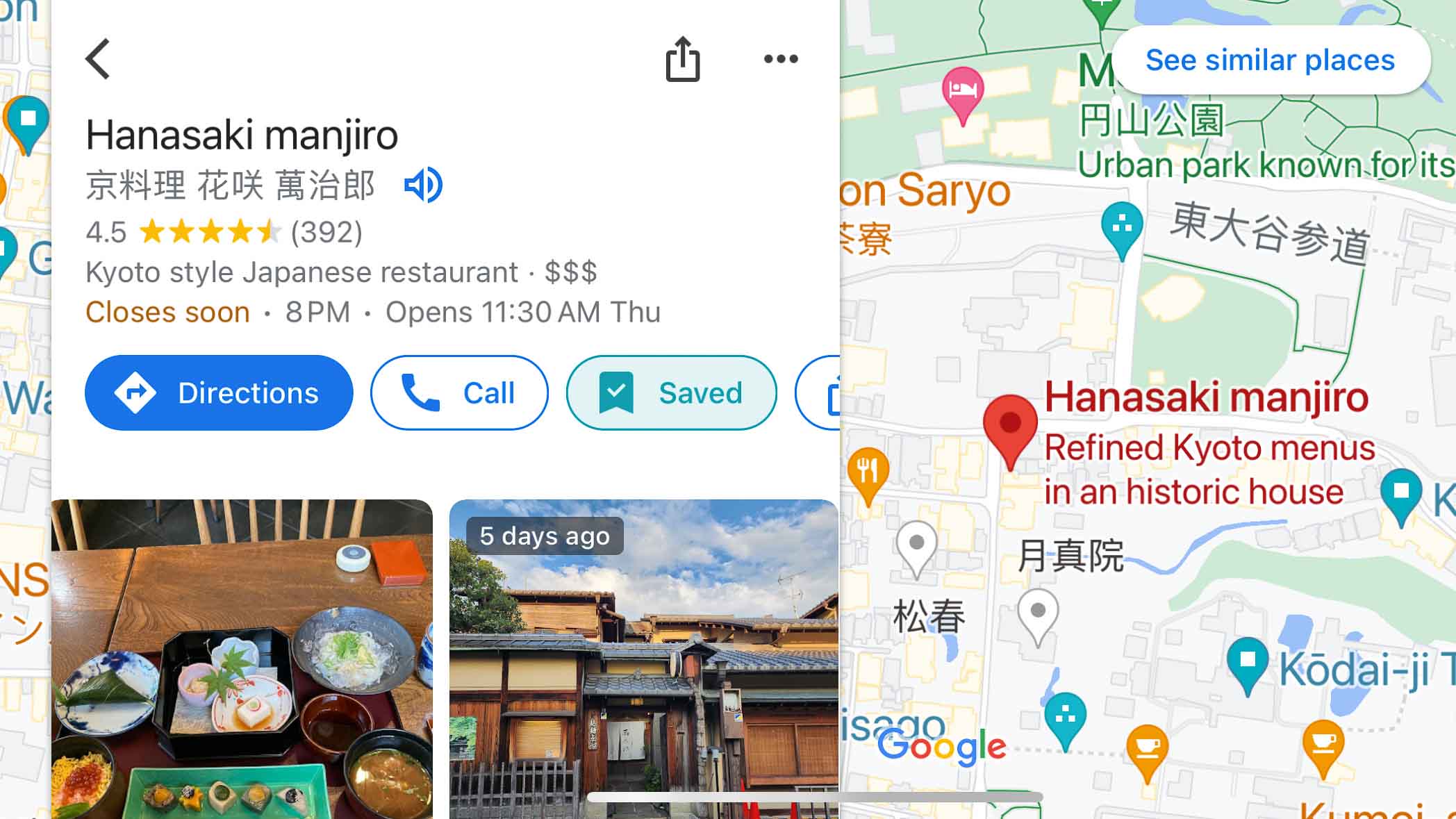
The entrance to the restaurant is quite low-profile – no flashy signs or boards. We just slid open the door and said “Sumimasen” to notify the staff of our arrival. A friendly female staff quickly came out to greet and guide us to the table.
The restaurant is divided into two floors, and we chose the second floor. The dining room on the first floor looked a little dark and small, while the second floor had tatami mats and Japanese decorations, providing a greater sense of tradition. Some window seats may have a nice view from the second floor.
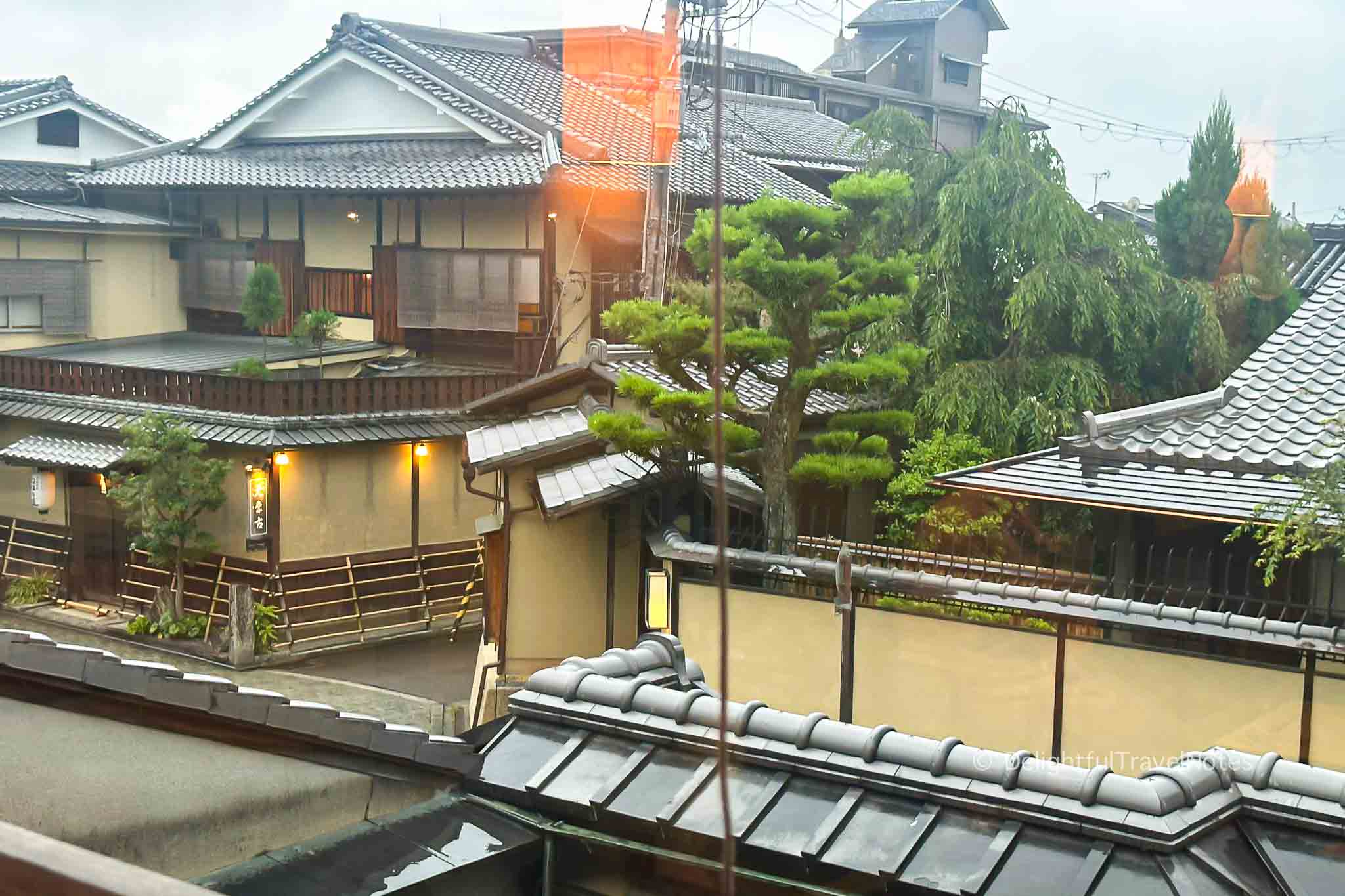
Menu
Hanasaki Manjiro serves both lunch and dinner. We opted for dinner, and the menu consisted of several tiers of kaiseki meals with different price ranges and different number of courses. Here are some of the options:
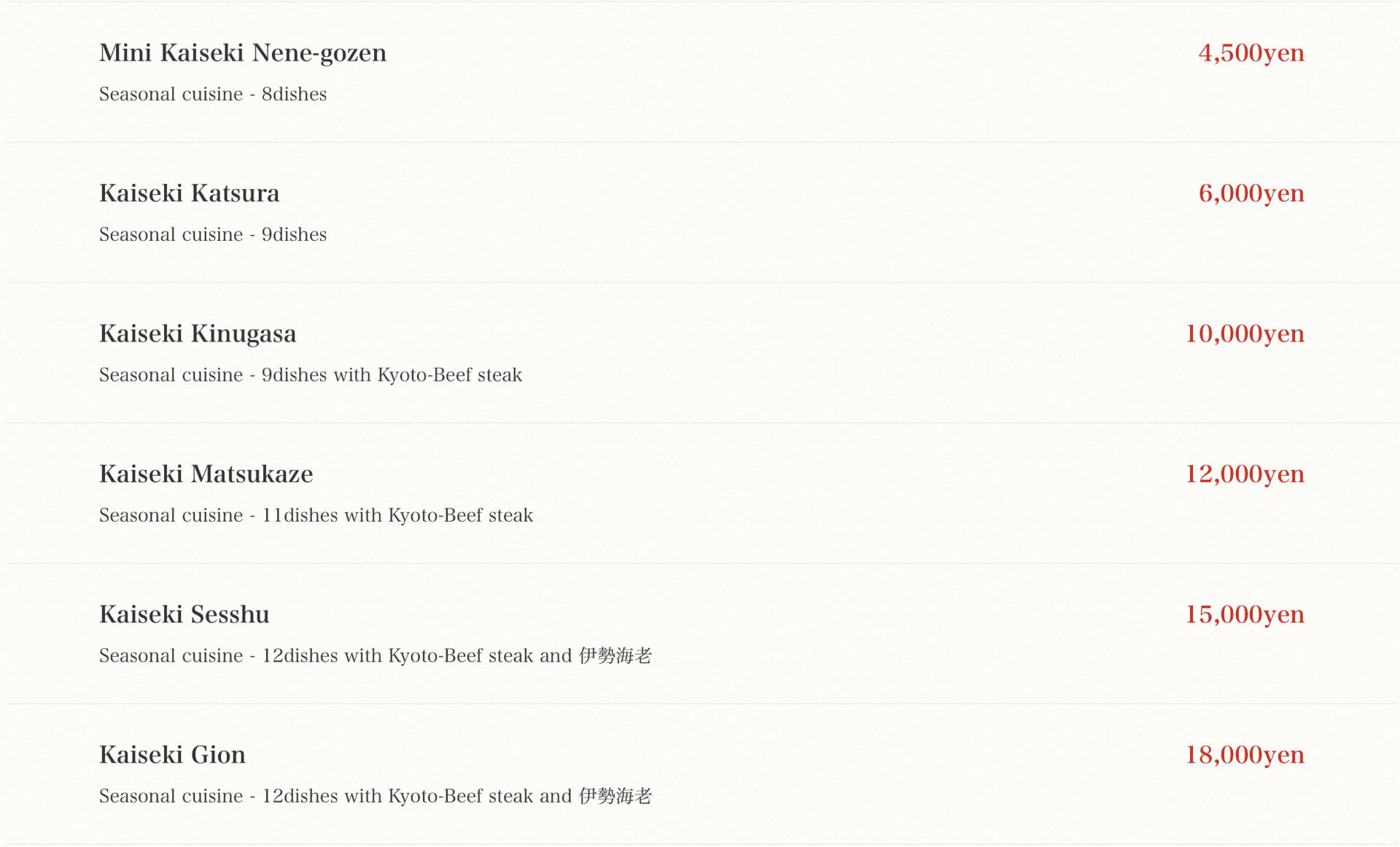
You can find the full menu of Hanasaki Manjiro on their website. Do keep in mind that actual dishes may vary according to season. We chose the 6,000 yen kaiseki dinner with 9 courses in the reservation we made on Ikyu.com.
Based on our recommendation, my sister’s family and my mom also visited Hanasaki Manjiro. They ordered the 15,000 yen set and raved about it.
Food
Here are the overviews and photos of each course in our dinner at Hanasaki Manjiro. We’ll also include photos of the more premium course my sister and mom had.
6,000 yen course meal
Overall, we thought the 9-course meal showcased a nice balance of flavors, textures, presentation, and characteristics of traditional kaiseki cuisine. The meal started with a delicate vegetable tofu/jelly appetizer, serving as a palate cleanser. This course was equivalent to amuse-bouche in Western dining.

It was followed by an assortment of Japanese vegetables prepared in bite-sized morsels. They were crisp and had a light flavor.
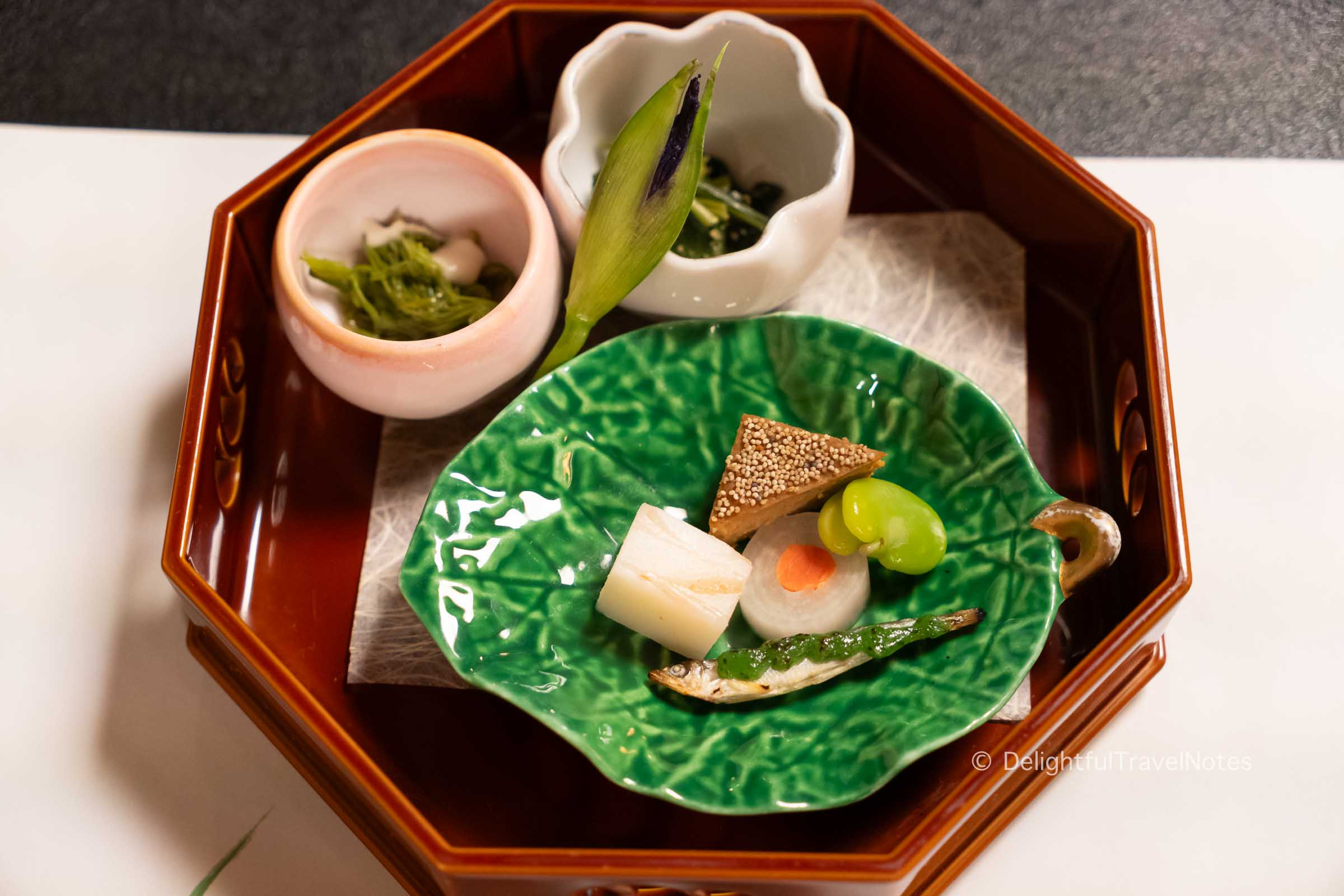
The third dish was suimono, a clear soup served in a lacquer bowl with a lid to retain the soup’s warmth and aroma. Once we opened the lid, a fragrant steam carrying hints of citrus filled the air. The soup felt light yet very satisfying with an umami broth, tender fish fillet and yuba (tofu skin).

This soup was the standout dish of our dinner, and it was quite expected since suimono was often highly regarded in kaiseki. It showcases a chef’s skills to extract the purest flavors from ingredients while maintaining a clear and delicate broth.
The fourth course was a selection of sashimi, featuring sea bream, tuna and an additional fish we cannot recall the name. The fish had clean and mildly sweet taste with a good texture.
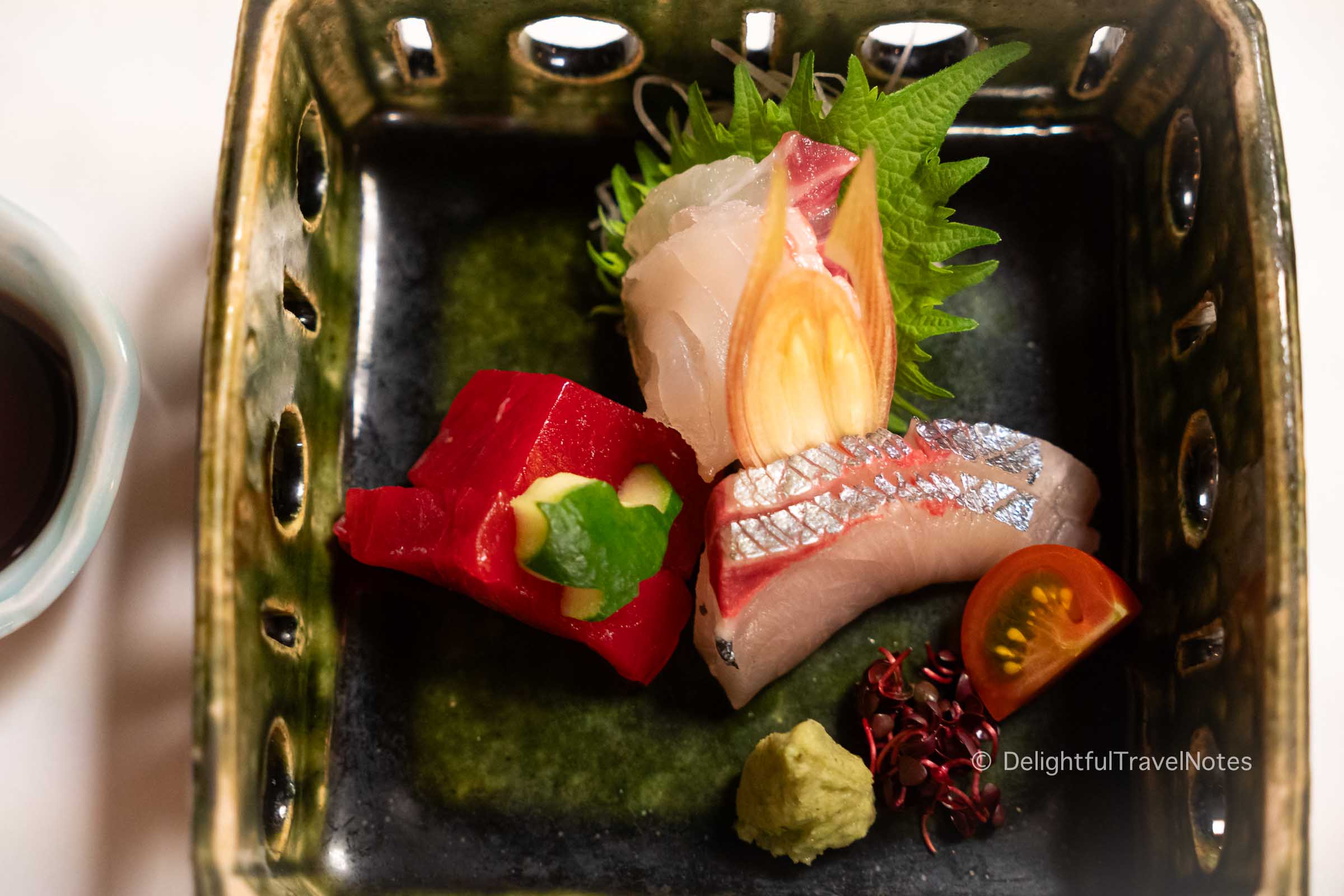
The sashimi plate was garnished with myoga (flower bud of the Japanese ginger plant) and murame (purple/red shiso sprouts). We haven’t seen these sashimi garnishes outside of Japan, so it was our first time trying them. They added some crispness, gentle heat and aesthetic aspects to the plate.
Following the sashimi, we were served salted grilled fish paired with a creamy bean puree. The fish was quite firm, which seemed to be typical for salt-grilled fish in Japanese cuisine. This dish was perhaps our least favorite of the evening at Hanasaki Manjiro.
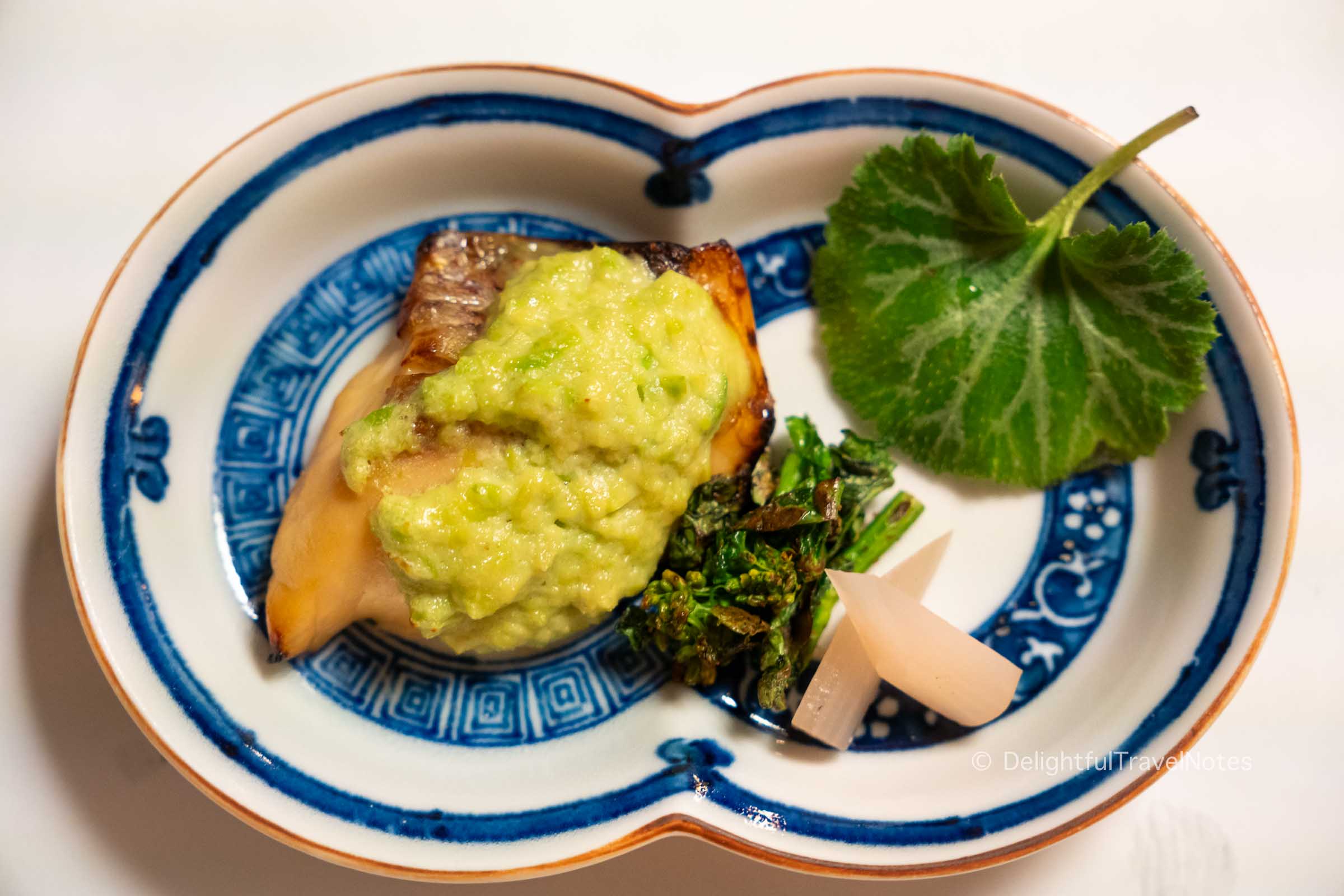
The subsequent course, however, was an absolute delight. It featured tender, melt-in-the-mouth braised pork belly, complemented by wheat gluten, daikon, and snap peas. The flavors were harmoniously married, with the savory pork belly balanced by the sweetness of the vegetables.
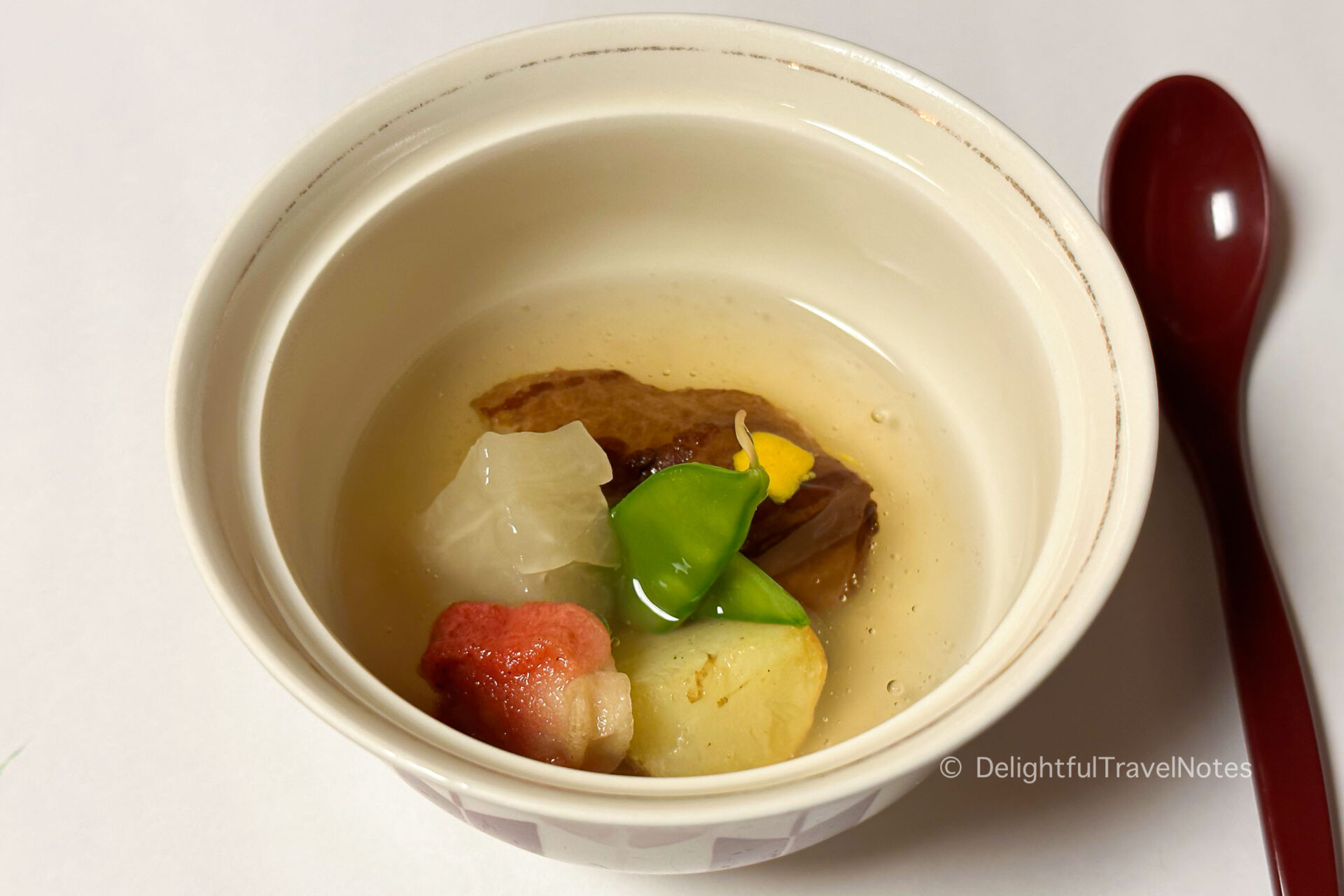
Next course was a tempura platter with mushroom, shishito pepper, baby corn, and puffed rice-coated shrimp. The tempura was light, crispy, and not greasy, with the baby corn piece being the highlight.
The dish were served with both dipping salt and dipping sauce. Dipping salt is a regional preference in Kansai, where Kyoto is located. In contrast, tempura is usually served with a dipping sauce in Kanto region.

We actually prefer eating tempura with dipping salt over dipping sauce because the salt enhances the natural sweetness of the ingredients without masking their flavor or making the tempura soggy. In high-end tempura restaurants, guests may be served different types of dipping salt.
The final savory course comprised a comforting rice ball served in broth, topped with whitebait small fish, pickled plum, and julienned shiso. Tsukemono (pickles) was served on the side. We found this course quite fun to eat with a lot of subtle flavors and textures. The hot broth also helped send the rice down.
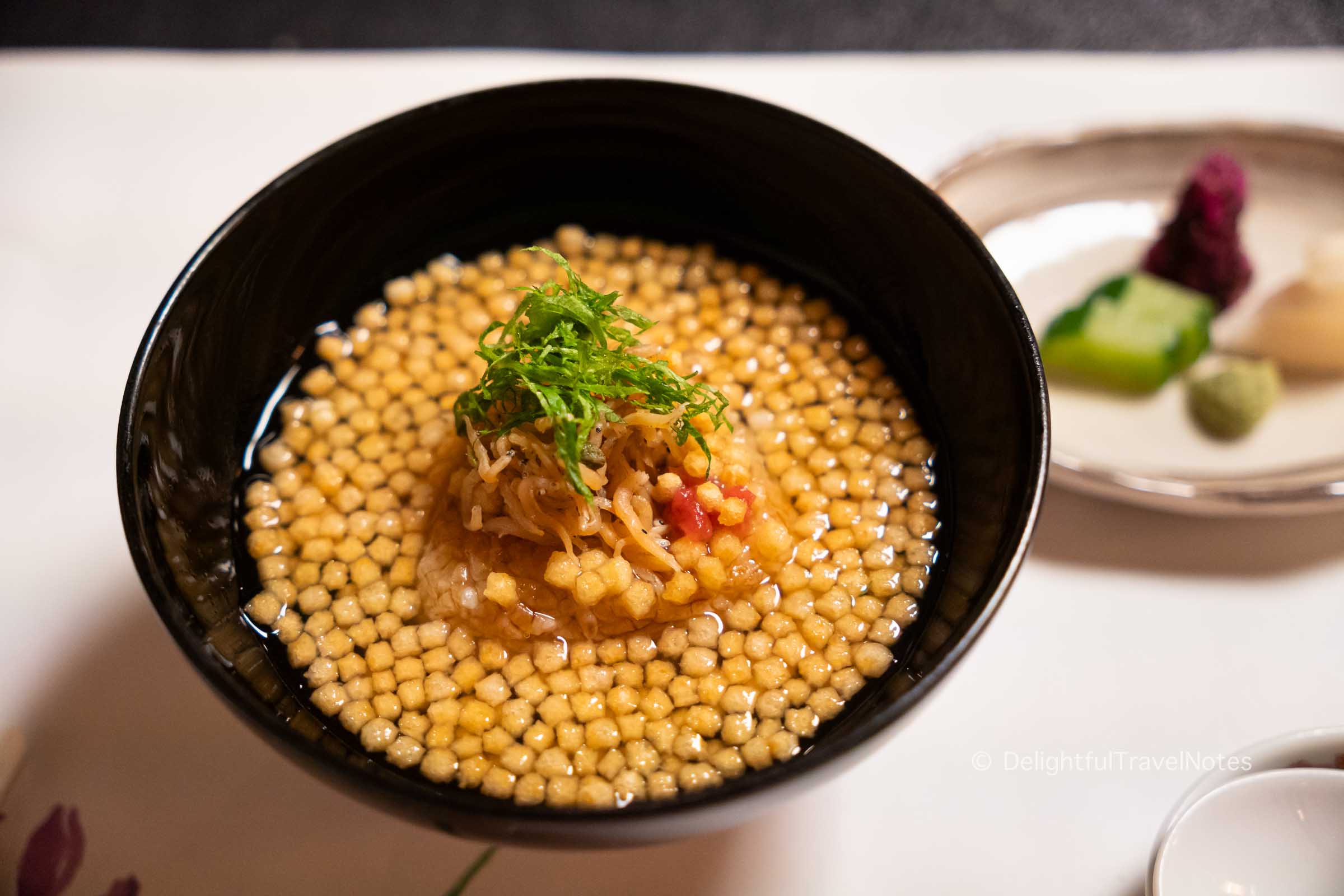
We ended our meal with a simple and refreshing dessert course of ice cream and fresh fruits, and hot tea. Traditional Japanese meal does not serve sweet confections (such as cakes and pies) at the end as in Western cuisines.
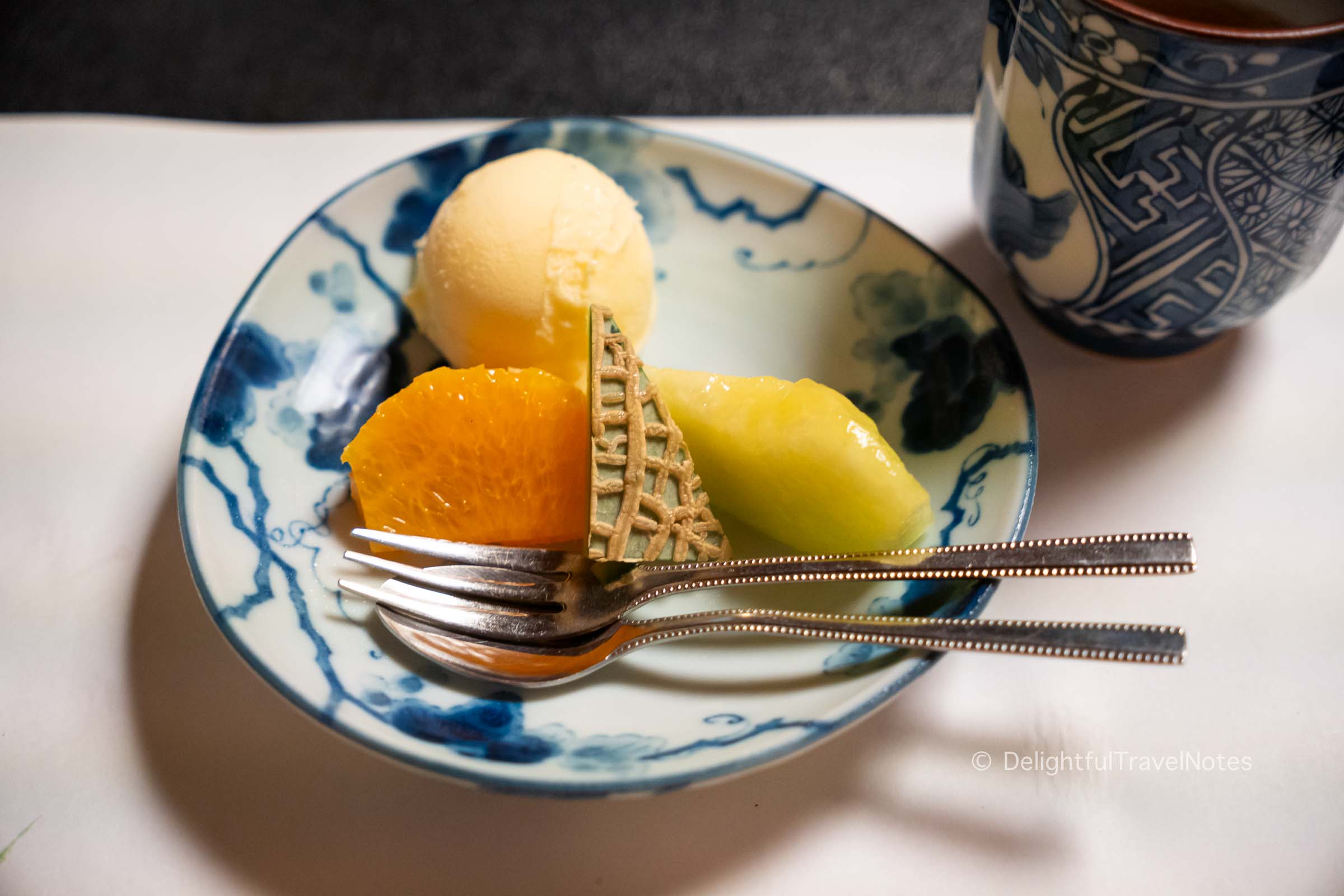
More Premium Option
The more expensive set my mom and my sister ordered featured more dishes with more premium ingredients such as abalone and Kyoto beef. I could also see from their photos that each dish had more elements on the plate than the 6,000 yen kaiseki.
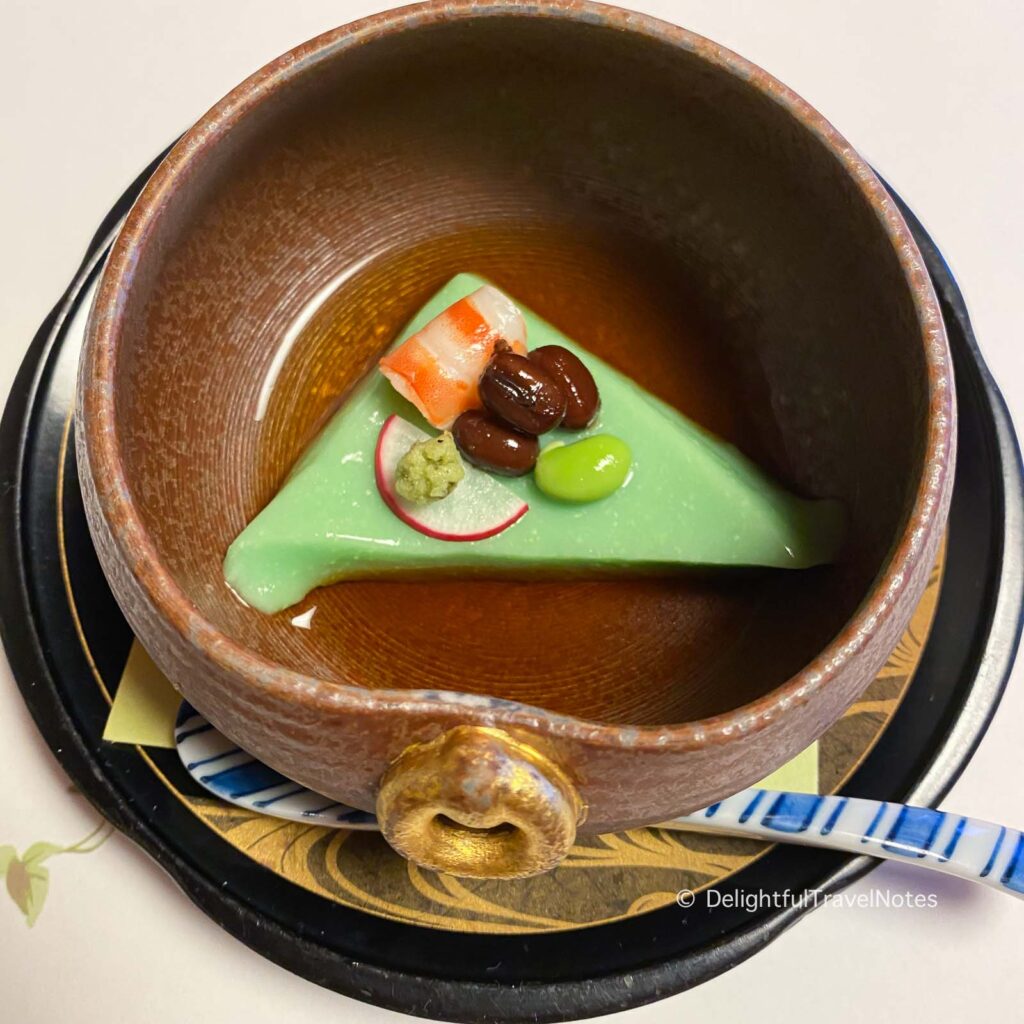
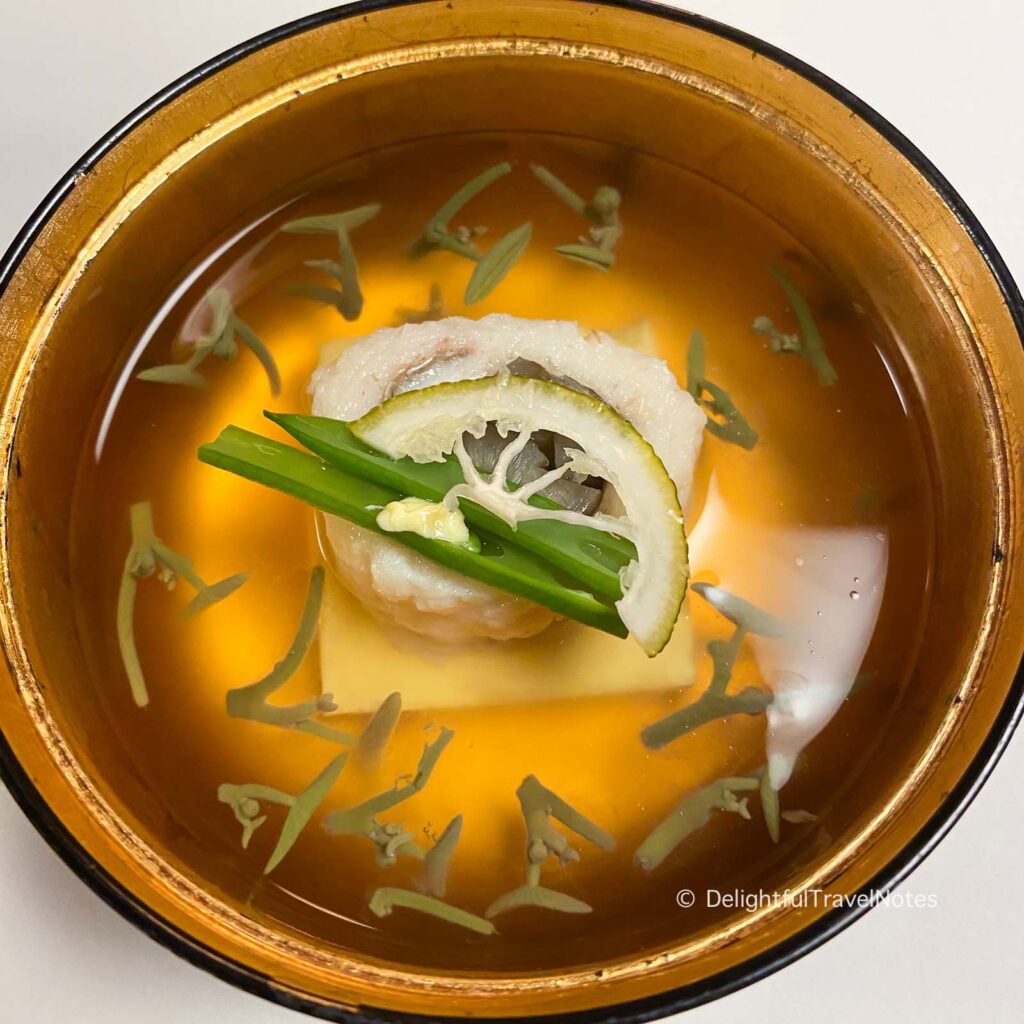


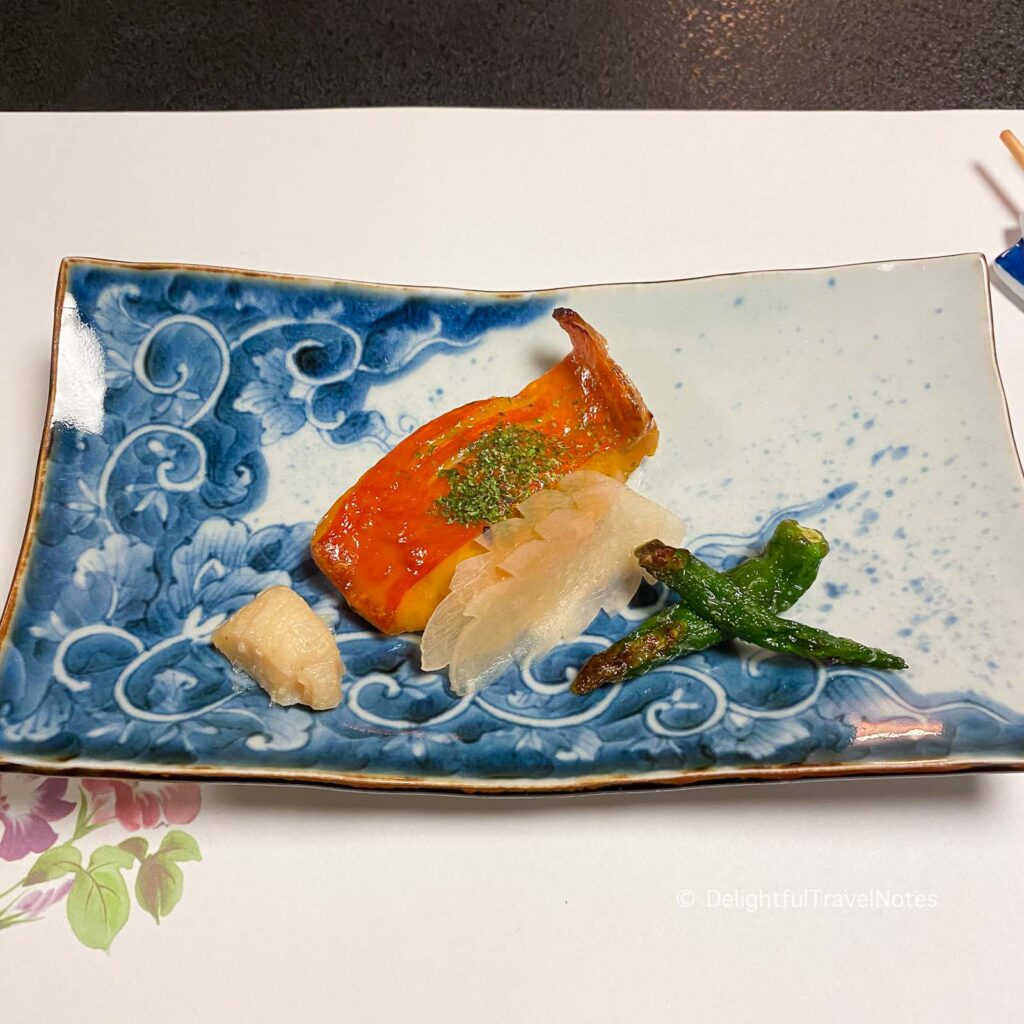
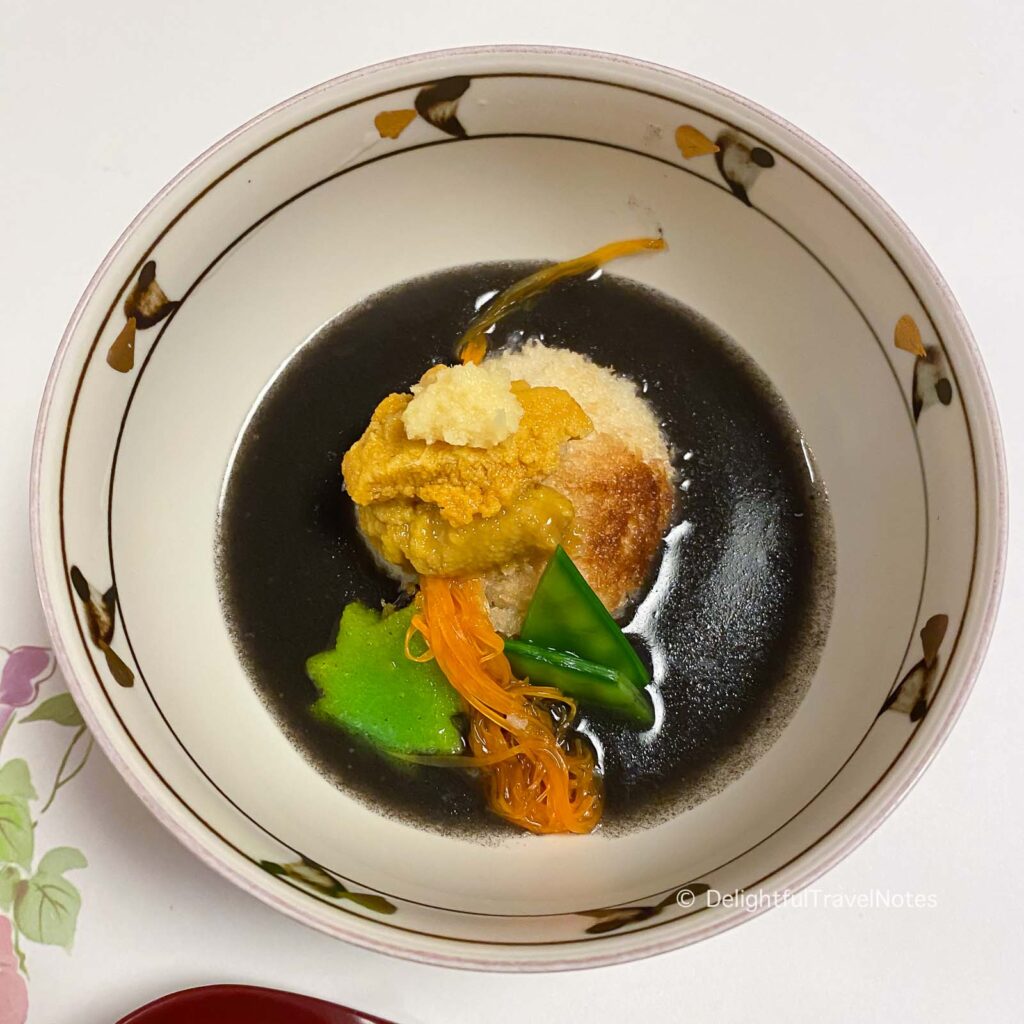


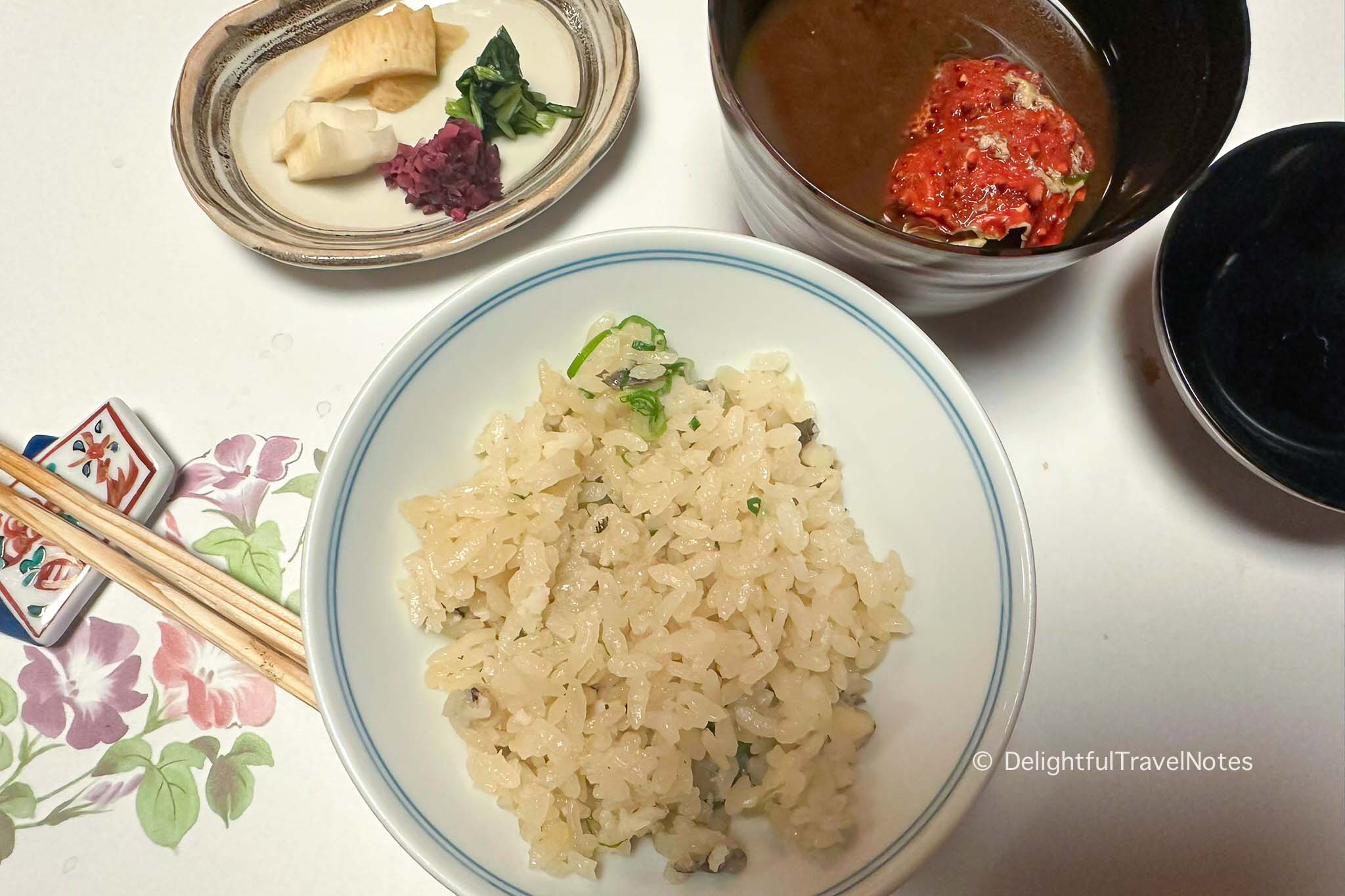
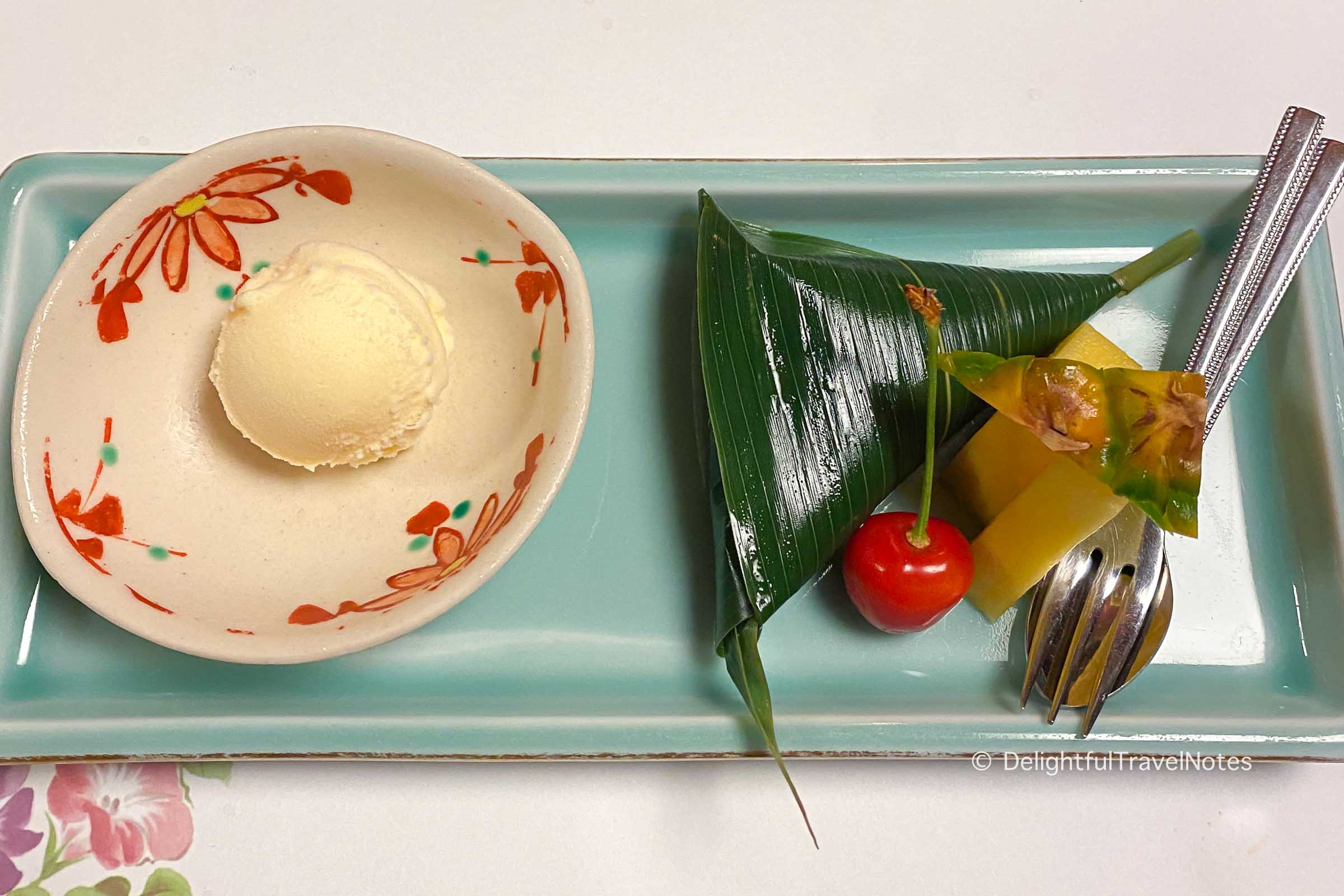
Service
Our female server was friendly and attentive throughout the meal. She could explain each component of the dish in English, although she couldn’t find the equivalent names for some Japanese vegetables. She also carefully explained if a garnish was not meant to be eaten. We did feel if we could hold a conversation in Japanese, the dining experience would undoubtedly be more interactive.
Food was served in a timely fashion, with a perfect balance between not feeling rushed and never being left waiting. Each dish was served to us at its ideal temperature, ensuring optimal texture and flavor.
Overall Impression
In general, we were very happy with our dinner and we thought Hanasaki Manjiro delivered a kaiseki experience with good value for money, striking a balance between affordability and quality. We totally recommend Hanasaki Manjiro to anyone looking for a genuine and affordable kaiseki in Kyoto.
The 6,000 yen dinner was not as exquisite as what we had at some other establishments, such as Hassun in Kyoto or Madoka no Mori ryokan in Hakone. However, it offered a delightful introduction to the delicate flavors of Japanese kaiseki cuisine. We were quite impressed with what they delivered at this price point. You can also opt for a more expensive set which is more elaborate.
For those unfamiliar with Japanese cuisine, we think Hanasaki Manjiro offers traditional flavors that are unlikely to challenge your palate. For those who are familiar with the cuisine, there are still things to appreciate and enjoy. If we revisit the restaurant, we will choose a more expensive kaiseki course to see more of their culinary capabilities.
